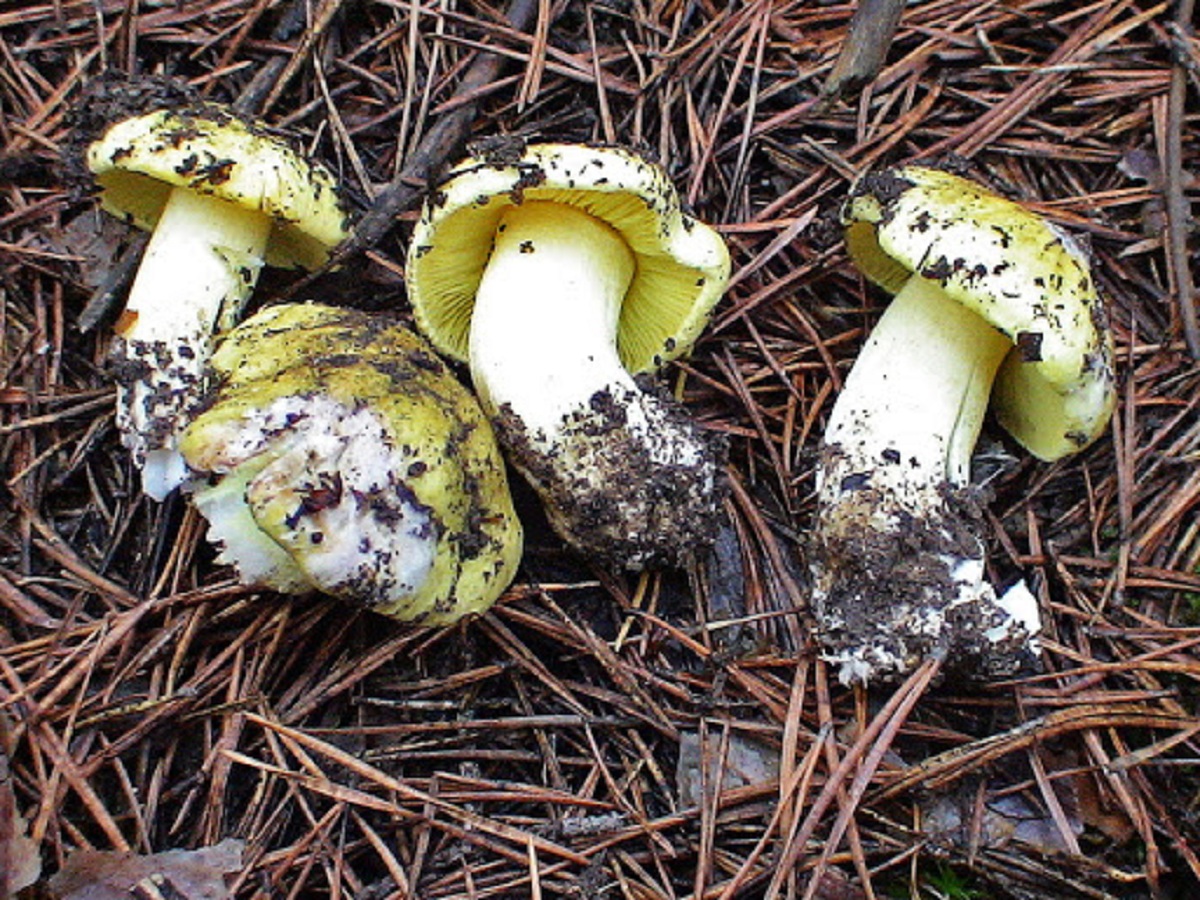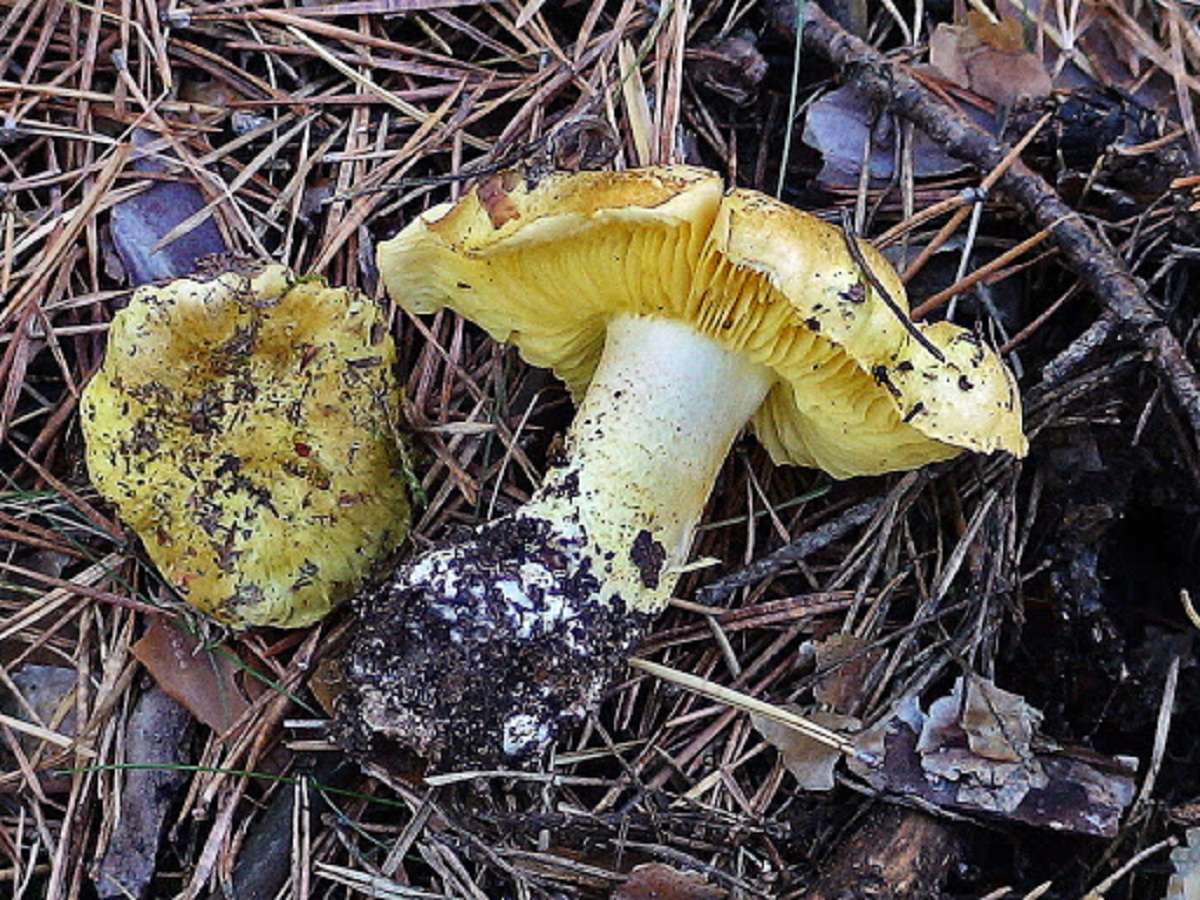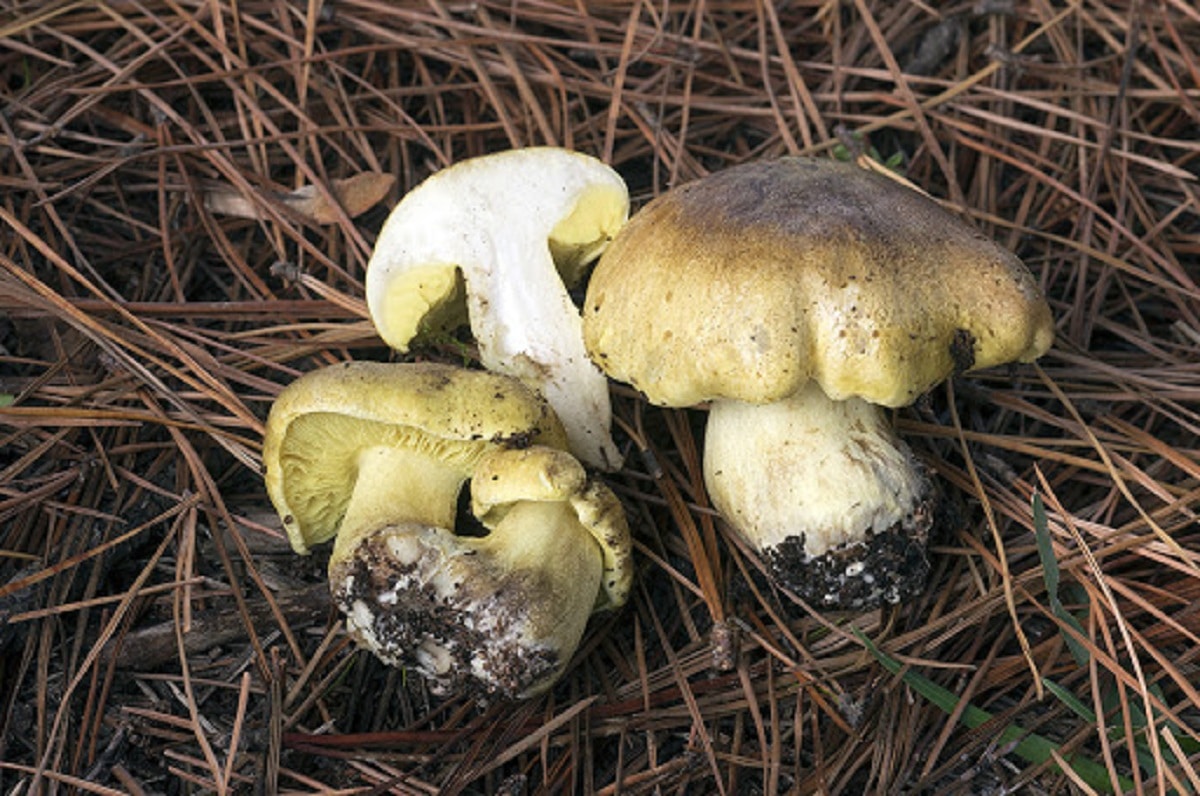
When we collect the mushrooms of the Tricholoma group we must be careful since some of these specimens are toxic. An example of this is the Equestre tricholoma. It is a type of mushroom with a slight toxicity that can be confused with others of the same group when collecting.
Therefore, we are going to dedicate this article to tell you all the characteristics, habitat and possible confusions of the Equestre tricholoma.
Key features

Hat and foils
It is a type of mushroom whose hat has a hemispherical shape. When it is young it has this shape but it evolves into a wavy plane as it develops and reaches maturity. Sometimes, we found some specimens of this species with the hat somewhat depressed and with a mamelon. Usually this hat has a diameter of between 5 and 12 centimeters. When the weather is rainy we can see that it takes on a somewhat more viscous appearance.
Its cuticle is easily detachable from the meat and has a yellowish color with brown or greenish radial fibers. These fibers are usually of a darker shade. It has a large number of fibrils in the center, being easier to recognize and they disappear as it advances to the margin. This can be considered as one of the main differences when identifying the Equestre tricholoma. The margin of the hat changes with age. When it is young it is curved and evolves to lobulated as it develops and reaches adulthood. It can also be seen that it is lighter in color than the rest of the hat.
Its blades are low-cut, lobed and ventruded. It has smaller lamélulas and they are tight between them. It can be easily distinguished since it has a very characteristic yellow color of this species. And is that a golden yellow can be identified that is enduring during all phases of its life.
When this species reaches maturity it can be seen that its blades are no longer the same between them. This is because they become more brittle and break more easily. In addition, its edges become irregular and somewhat serrated.
Pie and meat
As for the foot, it is quite straight or curved cylindrical depending on the specimen. We can see that it has a fibrous appearance and a length of between 5 to 10 centimeters long and between 0.8 and 3 centimeters in diameter. This foot has a slightly lighter yellow color than that of the hat. It can also serve as an indicator to differentiate the Equestre tricholoma of another similar species. At the base we find a more ocher tone and it maintains its longitudinal fibrils throughout the foot. Sometimes we find a somewhat clavicular foot. That is, it is shaped like a nail.
Finally, its flesh is white and we find a yellowish color under the cuticle. The meat is consistent and thick although somewhat more fibrous on the foot. Its flavor is sweet and gives off a fungal smell. It has a soft mealy texture that is easy to distinguish.
Habitat of the Equestre tricholoma

This mushroom appears quite abundantly both solitary and gregarious. Its habitat is coniferous forests and it prefers sandy soils over clay soils. It needs humidity to be able to develop in good conditions and the growing season is in autumn and winter.
It is one of the mushroom species that will take the longest to germinate. It can also help us to be able to differentiate this species from others due to the growing season. On some occasions we can find these specimens under deciduous forests, especially beech trees. Although they are mainly found under coniferous forests. Its greatest abundance is found in those sandy soils.
There is great controversy regarding the edibility and toxicity of this mushroom. Although traditionally it has been considered an excellent edible, There have been some cases of severe Rhabdomyolosis that has coincided with the consumption of these mushrooms. This means that it is being considered whether the mushroom is toxic or not. Its name refers to the consumption since the Middle Ages by knights. Between 1992 and 2000, the majority of cases of severe Rhabdomyolosis coincided with the consumption of knight's mushrooms in an earlier and relatively close period.
It seems that it has been proven that this disease only occurs in some people who are extremely sensitive to the toxins contained in the Equestre tricholoma. However, there is a general risk of suffering a disease that can lead to death. For this reason, the consumption of Equestre tricholoma.
Possible confusions of the Equestre tricholoma

As we have mentioned previously, there are some mushrooms of the same group that have many similarities in their morphology. Mainly they can be confused with the species that we are going to mention below:
- Tricholoma aurantum: there are numerous monkey wolves that consider this species the same as the Equestre tricholoma. However, it has minor differences. The Tricholoma aurantum it is somewhat larger and has some more orange and brownish tones. It also has a more uniform color in an extended way both in the hat that is more mameloned, as in the plates and on the foot. As with this species, its consumption is not advisable since it is not known with total certainty if it is toxic or not. Faced with possible confusion, it is better not to collect any of them.
- Tricholoma sulphureum: it is another of the possible confusions of this mushroom. He also belongs to his group but has some easily noticeable differences. It is significantly smaller in size since, at most, it reaches 8 centimeters in diameter. One of the main differences is that it gives off a very unpleasant sulfur odor. The cuticle is not easily detachable from the meat and has a sulfur yellow color. It doesn't become slimy when it rains. It has a somewhat more silky or matte appearance. The blades are also further apart and their flesh is greenish-yellow in color. It is a slightly toxic species, so its consumption is not recommended.
I hope that with this information you can learn more about the mushroom Equestre tricholoma.